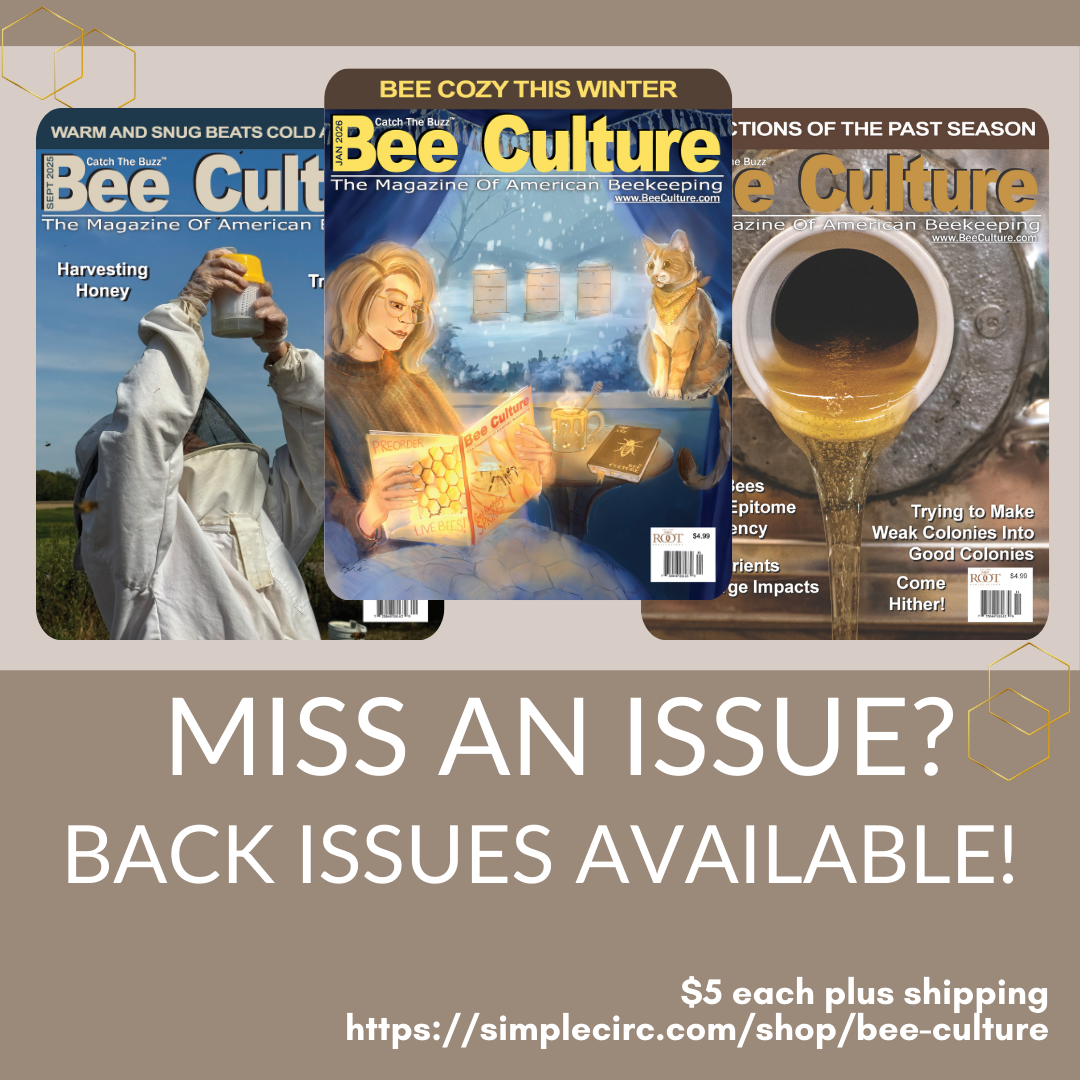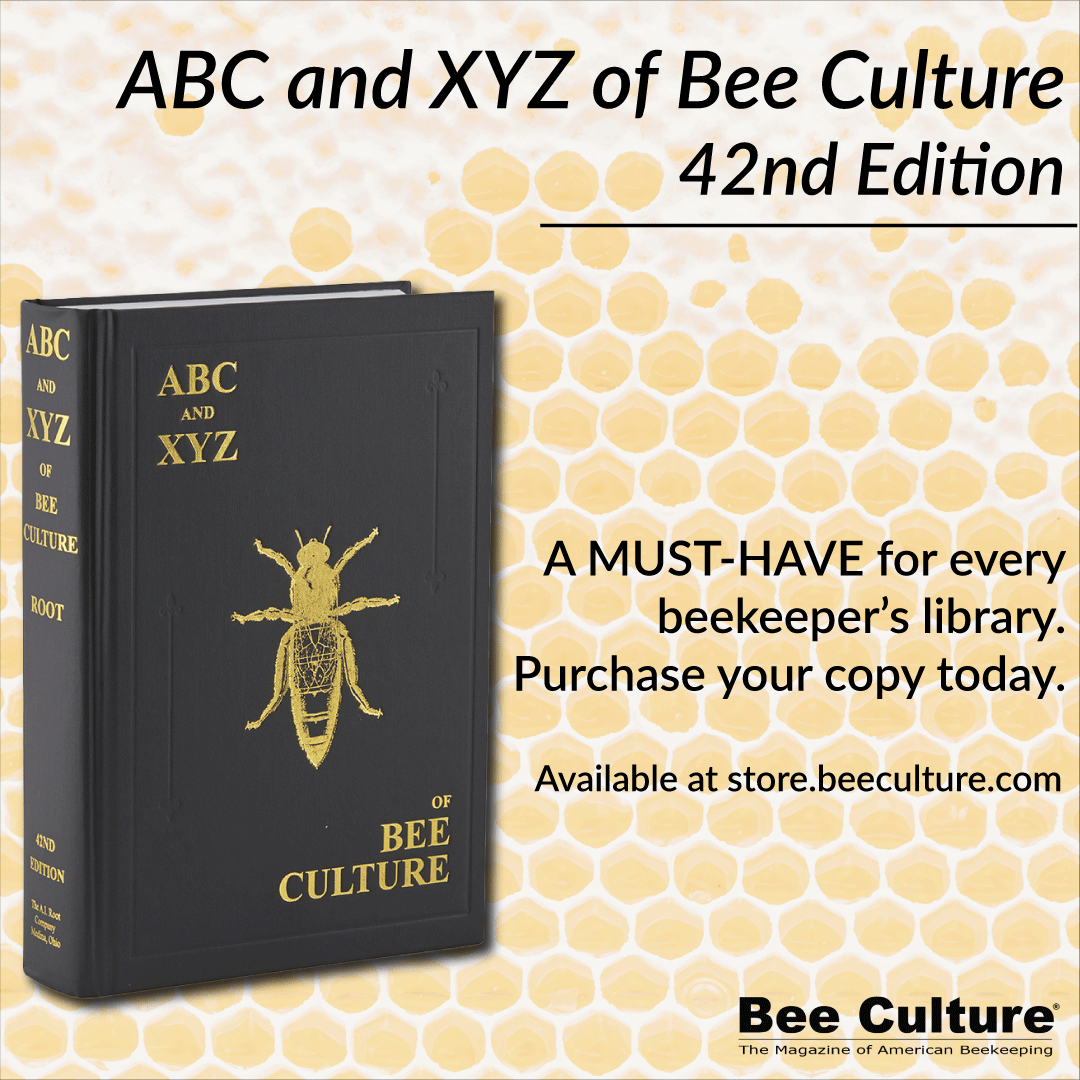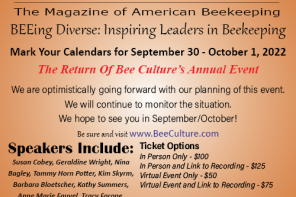Royalty Hive, A Rotable Colony
Beekeeping requires routine inspections and management techniques to maintain hive health, and part of that process includes removing honey supers that can weigh thirty pounds or more just to gain access to the brood. With flare-ups from back surgery a few years earlier, I found it very difficult to carry out these tasks.
Wanting to make the brood area more accessible without the heavy lifting and a dismantled hive, I designed and built my first rotatable beehive using standard frames that are readily available on the market.
After four years of trials I have a marketable design. This design eliminates issues faced by older or physically challenged beekeepers with a more natural design for a colony.
The design consists of a sturdy metal stand that supports the hive. It allows ventilation around the entire hive, holds standard, deep, and medium frames in vertical position while bees are carrying out daily activities.
With the simple pull of a pin, the hive can be manually rotated 90° in one direction for brood accessibility or rotated 90° in other direction to access honey chambers with minimum effort. The hive is rotated at a workable height that requires only minimum bending.
The rotatable hive has proven trial-runs yielding more honey production and overall colony health, in part because it uses a larger brood frame. This frame allows the queen to lay more eggs without having to stop laying and relocate to the next available frame.
Visit www.Royaltyhive.com.
Beeswax Alchemy. How to make candles, soap, balms, salves and home décor from the hive. By Petra Ahnert. ISBN 978-1-59253-979-6. Published by Quarry Books. 8-1/4” x 10”, 136 pgs., color throughout, flexi-soft cover. $25 at Bee Culture’s book store, or book stores everywhere.
I have been working with the good folks at Quarry Publishing for several years now, and they have expanded their beekeeping titles and items greatly since we got together. Today they have my three books, a beekeeping calendar every year, a Beekeeping Journal, and a set of three beekeeping note books to use for anything bees. Now they’ve expanded their collection to include the best book on beeswax I have ever seen. They sent me a very advanced copy several months ago for comment, and I was so impressed I send back a rave review, and they used that comment on the back of the book. It is as good as they, and I say it is.
Chapters include basic beeswax info, candles (and more info on wicks than you can imagine), balms and bars, salves, creams and scrubs, soaps, home products (ornaments, firestarters, polish, luminaries, waxed wraps and much more), batik and encaustic painting, and pages and pages on ingredients guides and resources.
One of the features I like about Quarry is that they insist on lots of very good photos. They begged, cajoled, threatened and argued with me for more photos for my books, and they probably did the same for Petra because how to do everything is shown with good photos, ingredients lists, equipment needed and instructions. If beeswax is part of your business, your business should get better. If it’s not, now it will.
Kim Flottum
The Hive and Honey-Bee, by L. L. Langstroth, third edition. ISBN 978-1-908904-52-2. 9½” x 7¼”, 409 pages, black and white, paper bound. $25 Available at Bee Culture’s Book Store, or book stores anywhere.
First published in 1860, this third edition has significantly more drawings of the equipment discussed, and introduces several new management methods that utilize the moveable frame hive to its fullest. It’s always interesting to note how much they knew then, how much hasn’t changed, that practical beekeeping information is still basically the same, and that the equipment isn’t much different. Still, much has changed, and some of what they thought then was fundamentally wrong, simply because the technology hadn’t caught up with them yet.
When A.I. Root was first introduced to bees here in Medina, he immediately wanted to know more so the very next day he went to Cleveland and looked in book stores for more information and found two books. This third edition of Langstroth’s book was the one he bought, and look where that got him. If you haven’t read any of the older editions of this work, this is a good place to start. You will be better for having immersed yourself in our history.
Kim Flottum
Great Masters of Beekeeping. By Ron Brown. ISBN 978-1-908904-73-7. 6-1/2” X 9-1/2”, 110 pgs, black and white, soft cover. $18.00 available at Bee Culture’s book store or book stores everywhere.
We did not arrive where we are today without the imaginations of many good people. Here are many of them, and the stories of what they accomplished. Starting with Charles Butler and the Feminine Monarchie published in 1609, to Francis Huber and his leaf hive, to Bevan and honey plants in the early 1800s, to Langstroth in the US, to the inventors of wax foundation, the honey extractor, the queen excluder, the smoker and the bee escape. With many inbetween, on to Karl von Frisch and the dance, Dorothy Hodges and her pollen color book, and ending with Brother Adam. The history of beekeeping is summed up in these pages, each chapter only a few pages long that captures the essence of the contributions of the 30 people highlighted here. There is much that is not new under the sun, but this book will help you understand how we got here.
Kim Flottum
The Principles of Bee Improvement. By Jo Widdicombe. ISBN 978-1-908904-62-1. 9½” x 6½”, 80 pgs., color, soft cover. $20.
Jo Widdicombe, B.Sc. (Hons.) Environmental Science, has been beekeeping for over 30 years and has been a member of BIBBA for more than 25 years, serving on the BIBBA Committee. Jo worked as a Seasonal Bee Inspector for five years and is a Bee Farmer in Cornwall UK running over 100 colonies. The Principles of Bee Improvement offers a practical approach and is an attempt to lay down guidelines which are true and applicable to beekeepers in any circumstance. Rather than searching the country, or the world, for the perfect bee to breed from, this book explains how to select and improve bees from the local bee population. It discusses the problems of importation, the use of natural and artificial selection, assessment of colonies and selection within a strain. By following these methods, the standards of our bees can be raised, producing gentle, hardy and productive bees. Northern Editors
Farming for the Landless. New Perspectives on the Cultivation of our Honeybee, By Sarah Waring. ISBN 978-0-9569404-6-9. 8” x 5”, 195 pgs, black and white, soft cover. $15.
Devastating honey bee losses have resulted in rallying calls to ‘save our bees’. Media interest and a multitude of campaigns have raised public awareness and yet also reinforced popular myths. Concern for bees is high, but what might it mean to consider the conservation of a farmed creature?
Informative and thought-provoking, Farming for the Landless travels from the intensive agriculture of Romania to fallow post-war Kosovo, from remote sites in Slovenia and Sweden to the urban sprawl of Paris and London, exploring changes across the European landscape to better understand this critical moment for honey bees, beekeepers and the non-farming landless community we have largely become.
Sarah Waring lives and works in the UK and Italy. She studied Fine Art Photography at the Royal College of Art, lectured at the Univ of Westminster and Univ of the Arts and worked as a writer and media publishing editor in London. She has travelled extensively throughout rural Europe where her interests in ecology and agriculture have been brought to life especially via hands-on experience in Austria, Italy, Sweden and Wales. Northern Editors
Bee Keeping with ZEST, by Bill Summers. ISBN 978-1-908904-69-0 color throughout. Soft cover. $18.00.
This is a book like no other on the subject of honey bees. It addresses the author’s belief and that of his colleague (Dave Durrant) that the welfare of honey bees in a traditional hive fails to provide for their needs as biological systems. This realisation led to the design of the ZEST hive which does do so according to the author. It deploys a longitudinal external envelope, with top bee entry and trickle ventilation, made from lightweight insulated building blocks and plastic lattice frames within which the bees draw out their wild honeycomb. The former is DIY from builders merchants and the latter available in boxes of 12. The external envelope is not just a lightweight insulated one, but is sufficiently heavy to provide the bees with a thermal lag of an envelope that is easily thermo-regulated to brood rearing temperature. From the honey bee perspective the ZEST hive overcomes all the problems of other hive designs and frame types. An unintended consequence of the ZEST hive design has been to eliminate Varroa according to the author. The ZEST is functionally free of it as is witnessed by the hive debris. The cause seems to be the smaller natural cell size and natural warmth of the hive envelope, both of which speed the biological process of honey bee pupation. The time available for the varroa to mature in the pupating cells is reduced. There has been a recent doubling of beekeepers in the UK caused by the ecologically minded seeking to assist honey bees in a better environment. This can be applauded. This book is to assist them and their bees. The ZEST hive is democratic. Anyone can have one. It is cheap, appropriate and amenable to a more self-sufficient way of life. It is a living sustainable system, not a product. It can be entirely D.I.Y. No one owns it. It can be free. Take it. Use it. Have fun. The ZEST hive does a great deal more with a great deal less.









